Cyclist
Big Ride: The Passo dello Stelvio, legend of the Giro
Sipping coffee in Bormio’s Hotel de Funivia, I’m feeling a touch anxious about the 100km and 3,000m of climbing that await me in Italy’s most northerly slopes. Fortunately I’m accompanied by someone who knows exactly what’s coming. Sitting opposite is Daniele Schena, otherwise known as Stelvio Man, who – as his nickname suggests – is very familiar with today’s main climb.
As we pump tyres and double-check supplies, I settle my own flutters with some gentle humour: ‘Ti senti nervoso?’ I say in my best GCSE Italian.
Having ridden it multiple times a week for years, and more than 600 times in total, if the Stelvio still makes Daniele nervous then his expression masks it well.
‘Er, no,’ he replies.
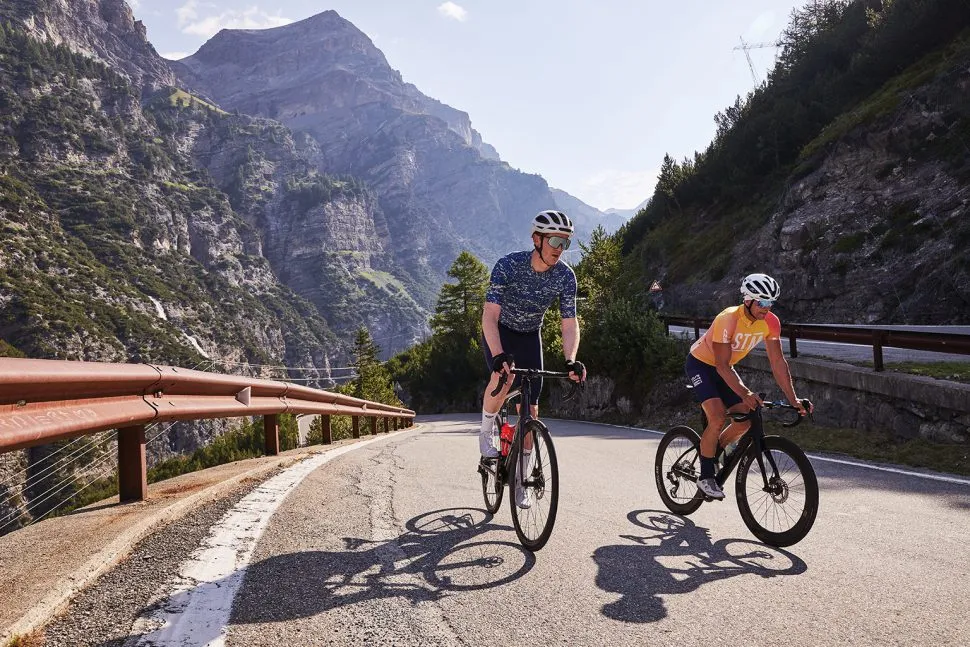
Borm ready
Sitting at around 1,200m altitude, Bormio is a bustling Alpine town at the head of a valley that’s surrounded by mountains on all sides. Even in mid-July, snow is settled on the surrounding peaks, which reach well above 3,000m.
We roll out of town, following the River Adda upstream, and settle into a steady climbing tempo. We will head up towards the summit of the Stelvio, but before we get there we’ll branch to the north at around 2,400m to go over the Passo Umbrail before descending into Switzerland and doing a large clockwise loop to take us to the other side of the Stelvio so we can take on its most iconic ascent.
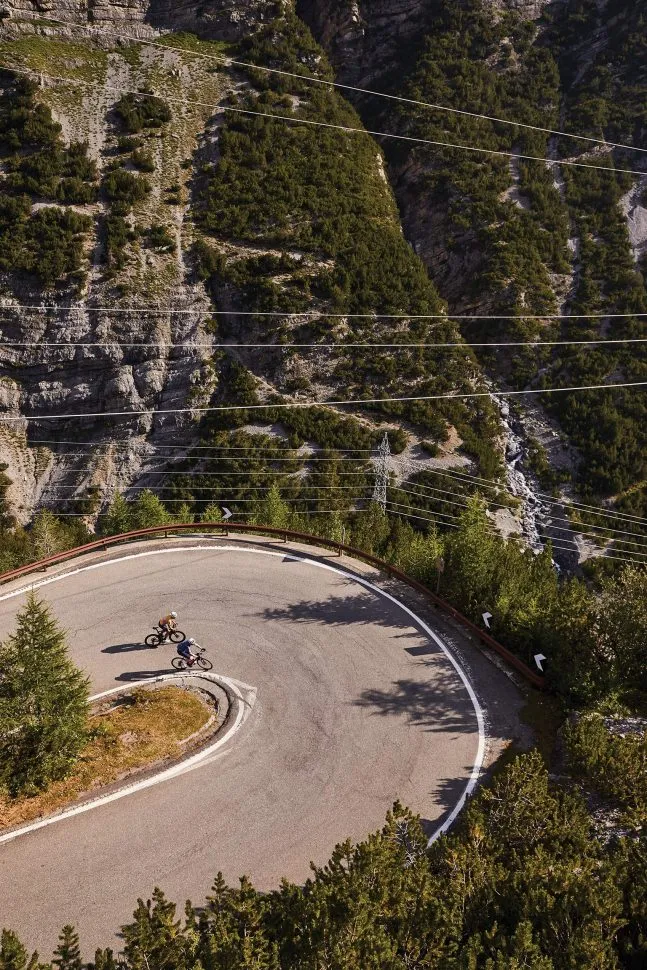
With a 7% average for 17.2km, the Umbrail is no cakewalk, but the gradient never strays beyond 8% so it acts as reasonable preparation for the main event. At least today is warm and dry, something that wasn’t the case when the Giro d’Italia tried to take in the Swiss ascent of the Umbrail in 2024.
With lashing rain in the valley and snow higher up, the peloton collectively decided to down tools and demand a reroute. In classically diplomatic terms, Australian rider Ben O’Connor called it ‘one of the worst organised races’ run by ‘a bunch of dinosaurs’.
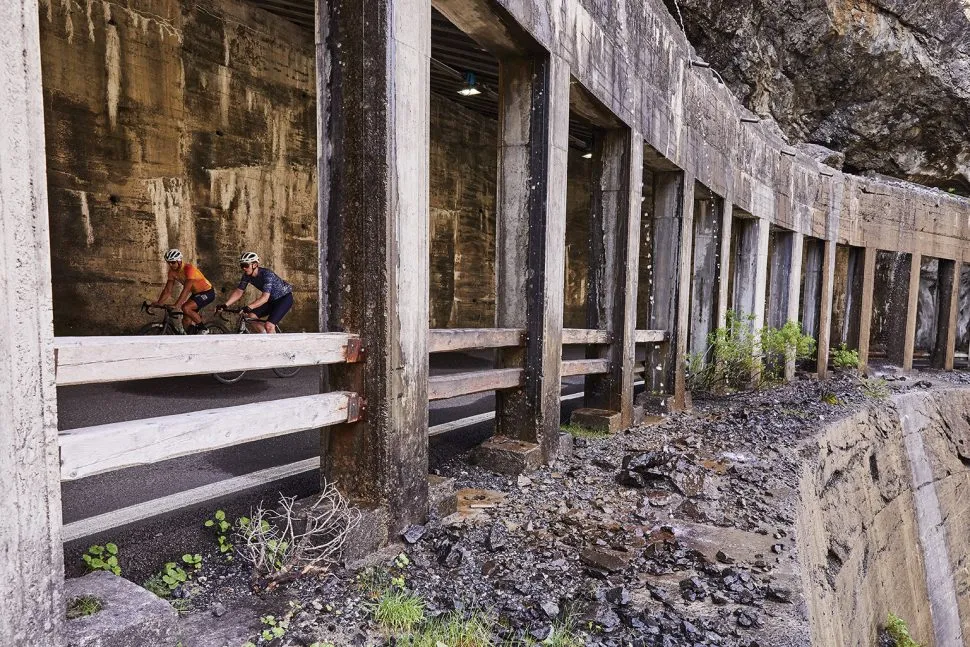
There’s little chance of us suffering frostbite today. As the morning heats up I find myself hugging the barrier to dodge the sun’s rays. To our left the almost 3,000m, tree-flecked granite slabs of Monte Radisca and Monte Pedenolo peer down fraternally on my glacial progress, while up ahead Stelvio Man has already realised he’s going to have a pretty leisurely day on the pedals.
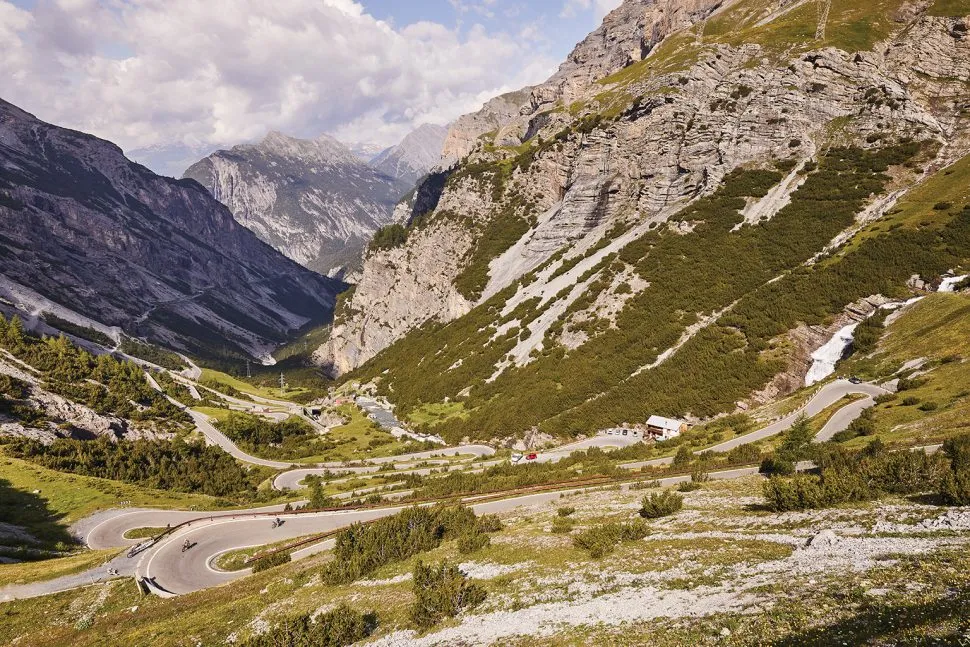
The higher we go, the less interrupted these views become. At the mouth of the valley I can see the road disappearing over the scree-fringed horizon, having jumped 200m in 14 switchbacks. Alongside this tight wiggle of tarmac is a roaring waterfall and an invitation to gaze east along the banister of road that plots our journey so far.
The kilometres completed don’t appear to have registered with Daniele, who looks for all the world like a man waiting for the climbing to begin. He tells me a few stories that crystallise the sobering connection with World War Two. Italian residents would clamber up Passo Umbrail hoping to slip into neutral Switzerland at the crest, but fascist soldiers patrolled the area and many people were intercepted and arrested within sight of freedom.
Daniele’s story effectively stems any complaints I might have about how hard I’m finding the climb.
The weight of history
We’re nearing the summit of the Umbrail Pass now, and the higher we climb the more history asserts itself on the landscape. A brutal-looking memorial – the Sacrario Militare dello Stelvio – a military burial ground and a chapel huddle together to commemorate the lives of soldiers. Among the acres of turf, Daniele points out the scarcely perceptible remains of Austrian bunkers and trenches used in a 1918 battle against the Italians.
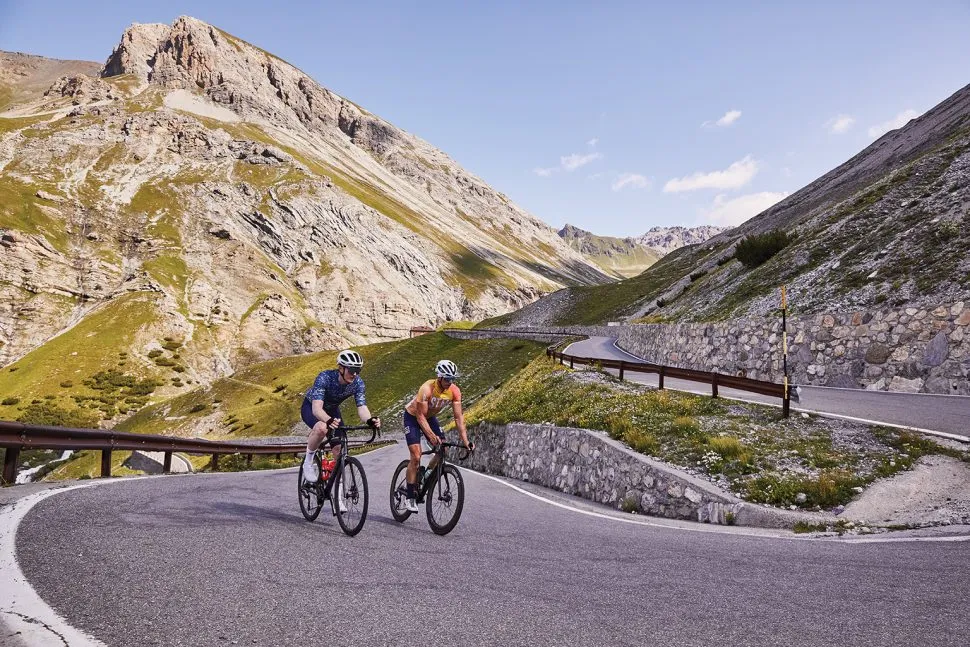
At the 2,505m summit, Daniele gestures towards the Swiss WW2 monument, a cluster of rusted military silhouettes surrounding an arsenal of information. From here you can follow a trail of Swiss defensive positions with a sign warning, somewhat morbidly, that ‘you will find traces of Swiss soldiers’.
Another sign says ‘Bears deserve respect not garbage’, so I hasten towards the 30km descent into Switzerland.
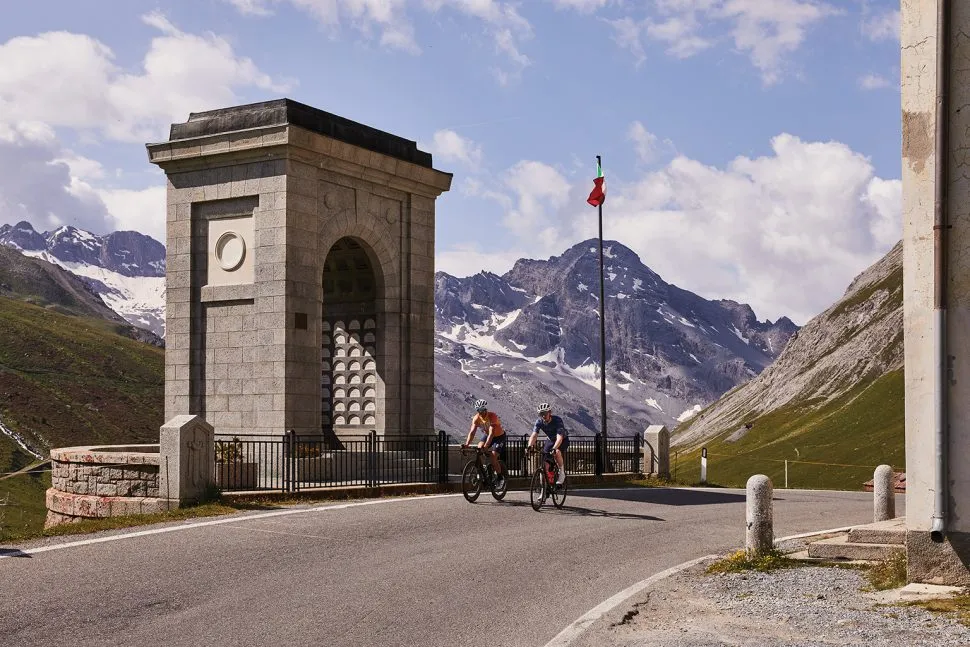
Although we’re about 50km from the Austrian border, it’s like dropping headfirst into The Sound Of Music. Burbling streams branch off the milky waters of the Muranzina river, flanked by lush trees and tumbling scree. The Stelvio seems to have hoovered up all the traffic so it’s just Daniele, me and the occasional shifty-looking marmot. The yodelling goats and harmonising children seem to be off today.
We pass through the village of Santa Maria Val Müstair at the foot of the descent and head northwards on valley roads, crossing back into Italy again and eventually arriving at Prato allo Stelvio, where we stop for food.
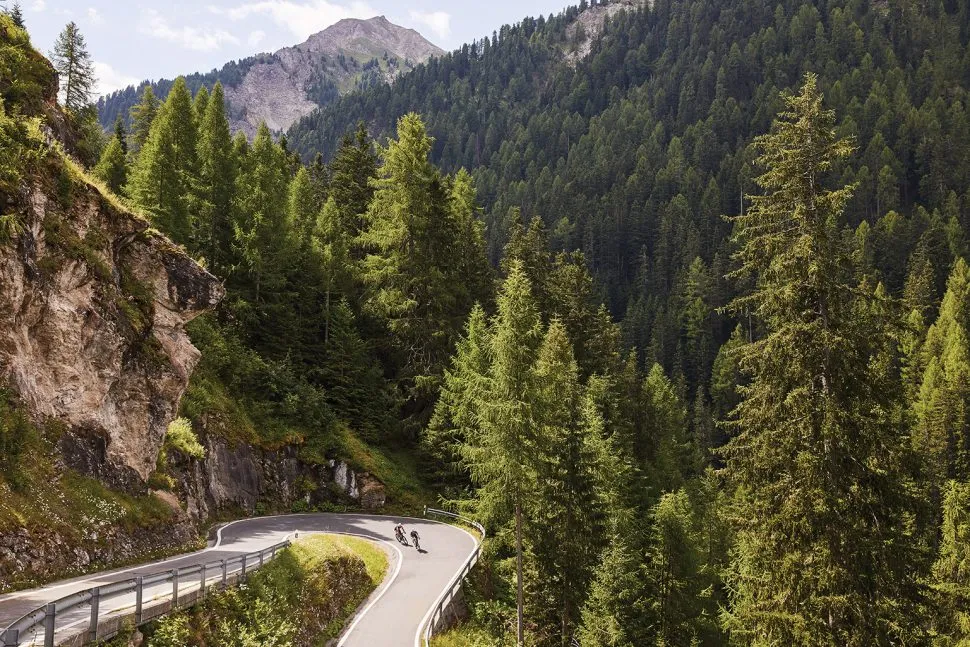
Sitting in the summer heat, with 50km in the bank and a decent meal inside us, I can just about convince myself that we have broken the back of the ride. Just about.
Climb every mountain
The start of the Stelvio’s eastern ascent is forgettable. Eyes down, I try to focus on keeping pace with Daniele. I’m jolted from my rhythm by the sight of a hellish sculpture park being pointed out by my ride partner.
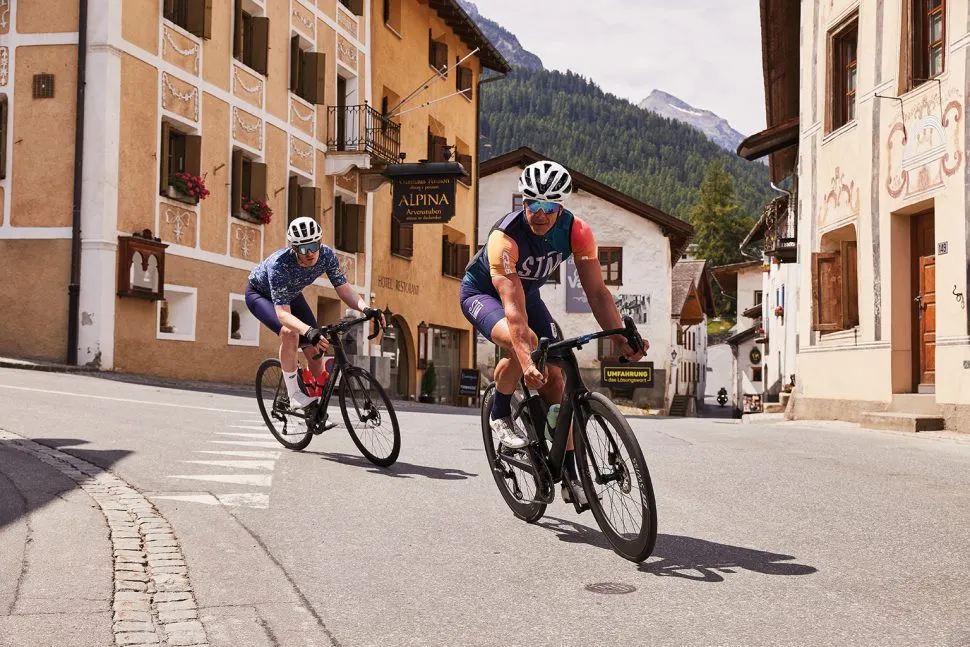
The so-called Runst Galerie seems like something a gnarled cop might come across in a grisly episode of True Detective. A fever dream of animal skulls, bones, taxidermy heads, horns, teeth, carved totem poles and painted figurines adorn both sides of the road, making up one of the lesser visited tourist spots of the region.
Like a boiling kettle, the Stelvio starts quietly and gets steadily noisier in the middle, before committing to a 9% shriek for the final 10km. When you consider the sheer audacity of the upper slopes as a feat of engineering, managing to keep the gradient predominantly consistent is quite something.
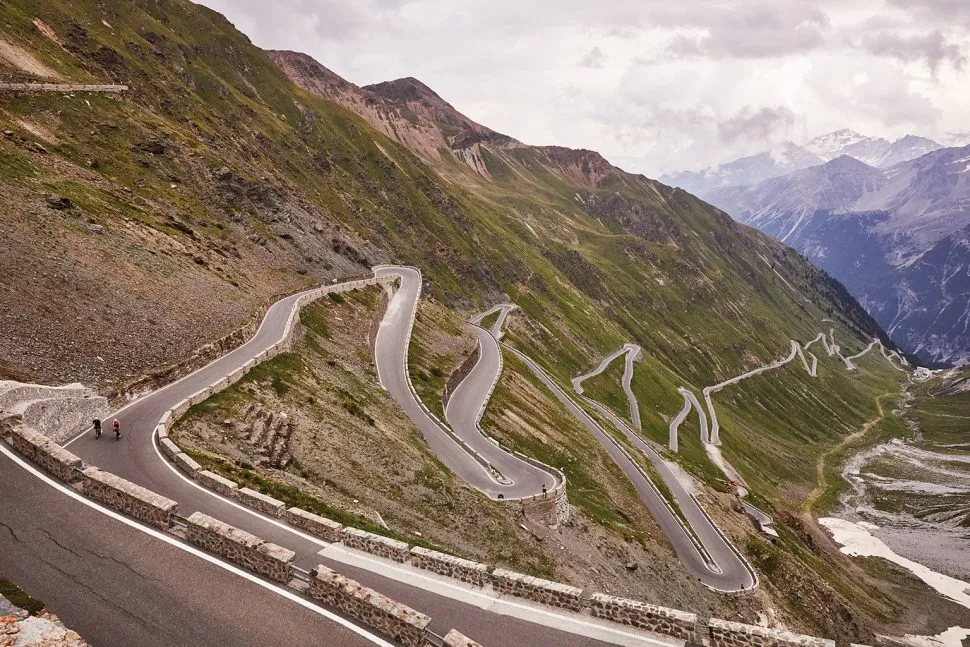
Completed in 1825, the road aimed to connect Vienna to Milan and formalised a route that traders had been using since the Bronze Age. Franz Josef I of Austria commissioned famed engineer Carlo Donegani for the project, which would require 2,500 workers and five years to complete. Today there’s just two of us, and I’m hoping we’ll be a good bit quicker.
It might be one of the most photogenic climbs on the planet but the Stelvio certainly makes you work for it. Thickets of evergreens suffocate the lower slopes, making the air cloying and providing little in the way of visual treats.
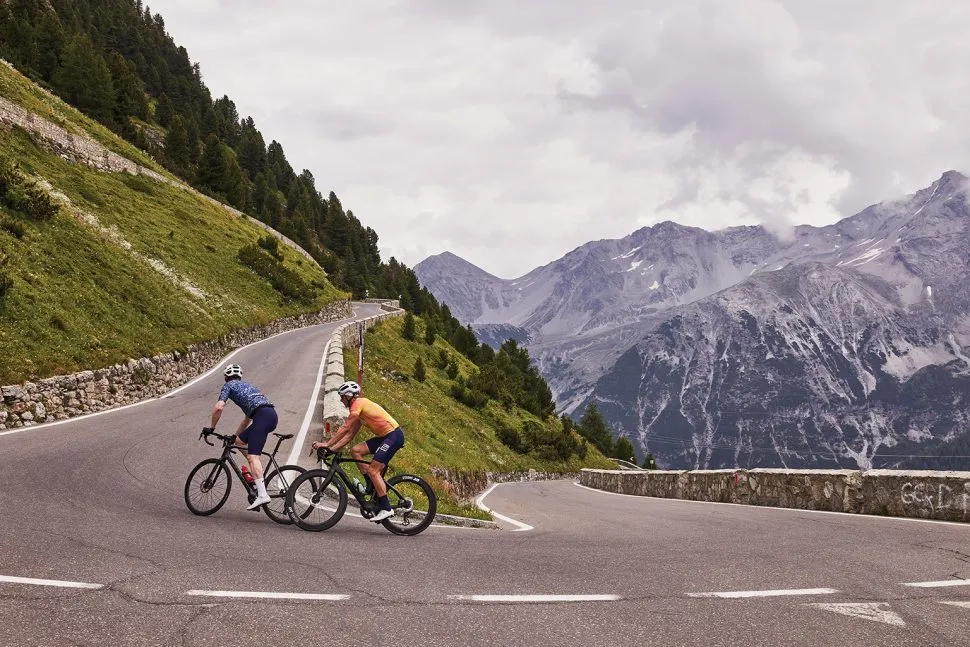
Before long, however – if 15km of solid climbing can be considered not long – the Stelvio, like a bloke flogging fancy watches in a trench coat, unbuttons and starts to reveal some of its glitzy wares. Turrets of smoky granite, dusted with snow, flash white through the browns and greens of the forest.
My eyes are drawn upwards to what looks like an impassable bottleneck, and when we pass the biscuit tin Berghotel Franzenshöhe we get our first peek at the climb’s famous denouement. From our position at the bottom of the death slide it looks like a sheer wall of earth and rock.
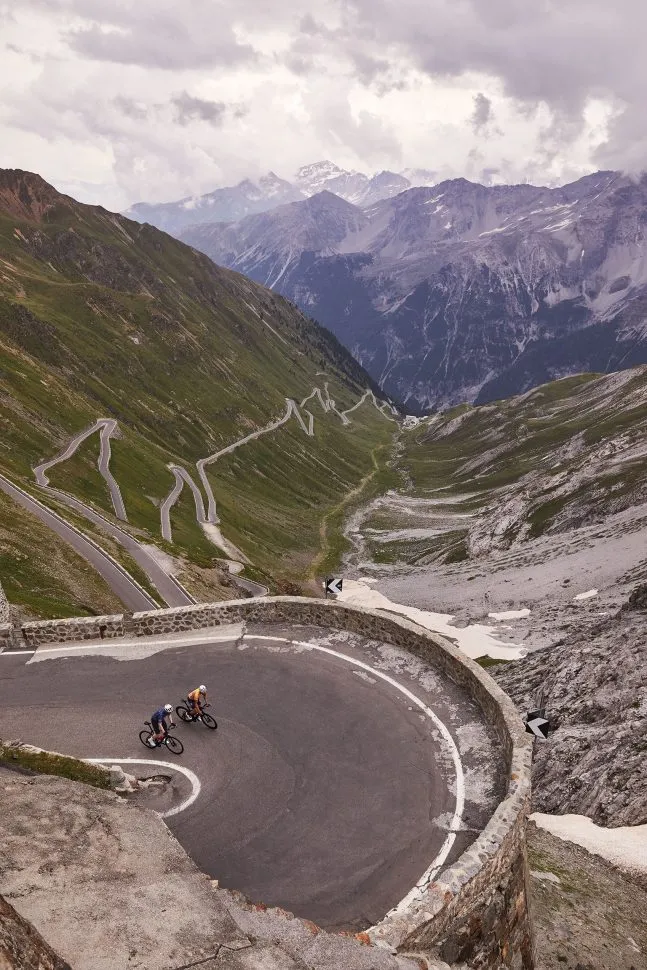
Drop the flag
With around 8km to go, and average gradients rarely dropping below 9%, this is where pro riders start to weigh up their options – assuming they’ve been able to get this far. The Stelvio was pulled from the Giro last year when part of the road opened up like a conker in early May, while teetering snowbanks also increased the risk of avalanche. It has also been scratched in 1984, 1988 and 2013.
On occasion, even when the Stelvio has remained open, chaos has still reigned. On Stage 16 of the 2014 Giro, organisers mistakenly neutralised the descent of the Stelvio to some teams and not to others, only to then de-neutralise it after the fact.
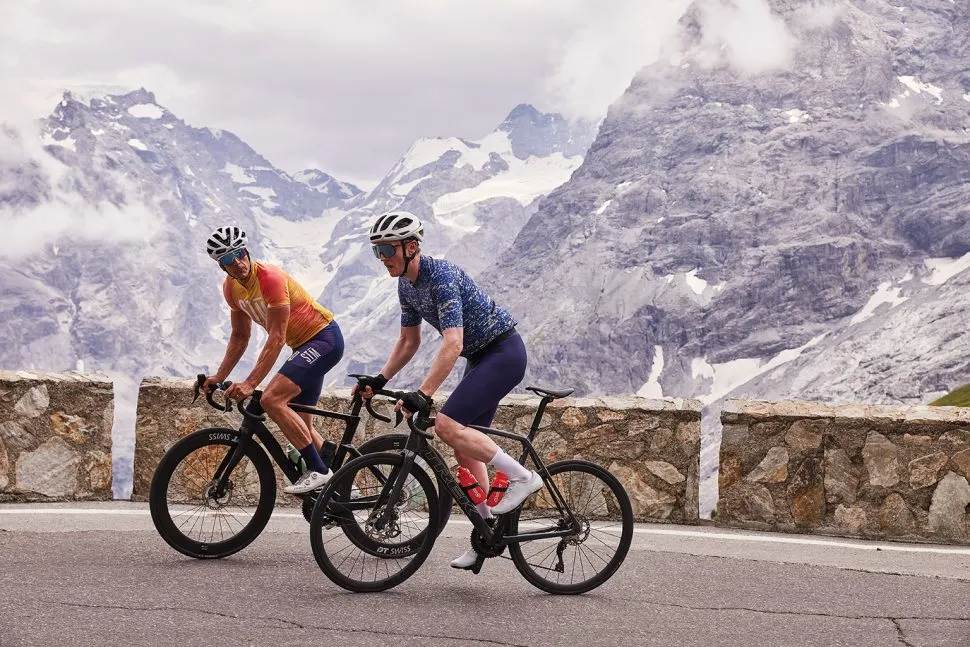
We don’t have to worry about a blizzard, but there’s still nothing like 500m of vertical ascent in just over 5km to focus the mind. While tucked as closely onto Daniele’s wheel as possible – you can draft at 9%, right? – I try to imagine the Stelvio as it once was, free of the stone ramparts that suspend the road, just a scarcely climbable face of gravel, rock and ice. Thinking of the herculean efforts of builders and engineers that have allowed me to ride up here somehow makes things easier.
By now the altitude is above 2,500m and my lungs are feeling the effects of the thin air, although remarkably my legs don’t feel too sorry for themselves considering the 3,000m of climbing clanking around in their veins. The final few hairpins are some of the most rewarding, each additional effort revealing another distant peak, a far-off kink in the valley road or speck of snowy horizon.
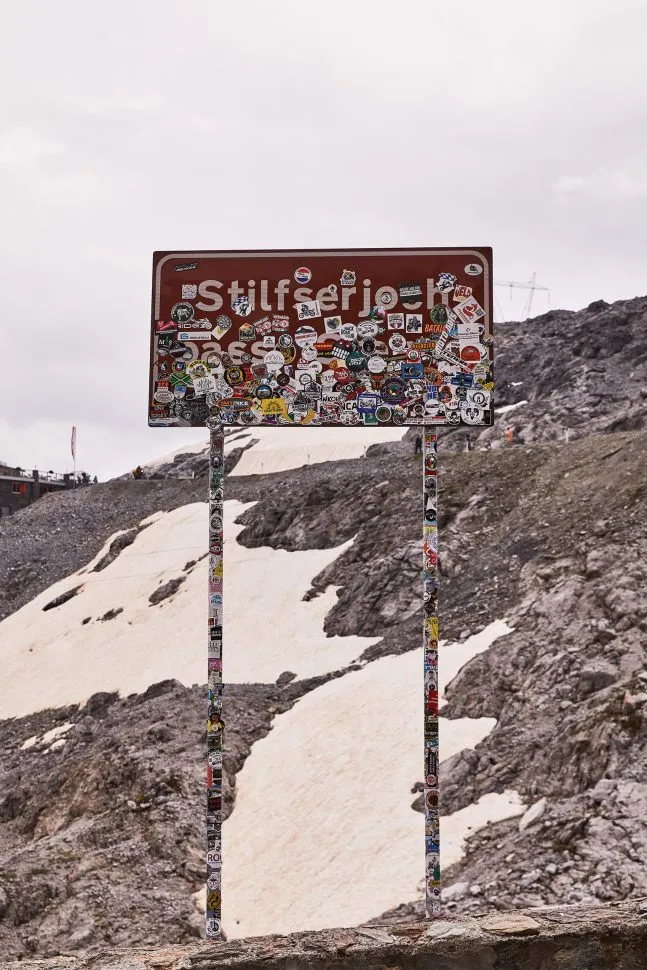
At the summit we’re greeted by a bustling micro-town of hotels, cafes, gift shops, car parks, hotdog peddlers and hordes of motorcyclists celebrating some perceived achievement by taking selfies in front of the summit sign. We turn off behind Hotel Stilfserjoch towards a dead end that houses a Tibetan restaurant.
From here, at 2,758m, the Stelvio’s absurd magnificence is laid out below us like a discarded skipping rope. It’s a road so thoroughly Italian in its flamboyance, excess and pure expression that it really has no business existing. Luckily for us, it does.
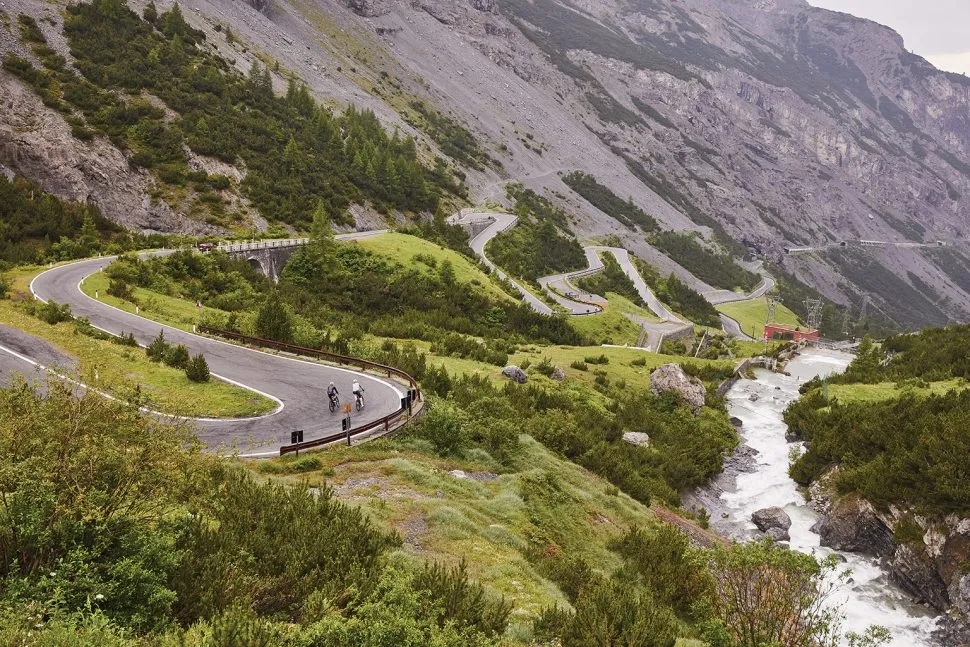
Climbing through history
The stories of the Stelvio are still being unearthed
Long before it became a playground for cyclists, the Stelvio was a battleground between the Italians and Austro-Hungarian Empire during the First World War, with soldiers from both sides ordered to stake out positions at altitudes as high as 3,000m and obliged to live and fight in what was brutal, frozen territory.
Since 2017, thanks to worryingly high summer temperatures, the ice on the highest peaks has melted enough to reveal a cave shelter on Mount Scorluzzo, which lies just above the Stelvio Pass. Researchers believe it was inhabited by Austro-Hungarian troops, and in the shelter they found an incredibly well-preserved barracks stocked with ammunition, lanterns, books, mounds of hay for mattresses, and even seeds that were subsequently planted.
It adds to a growing list of slowly thawing discoveries, including uniformed corpses, animal bones and the letters and diaries of soldiers trapped inside what must have been one of the most inhospitable places on Earth.
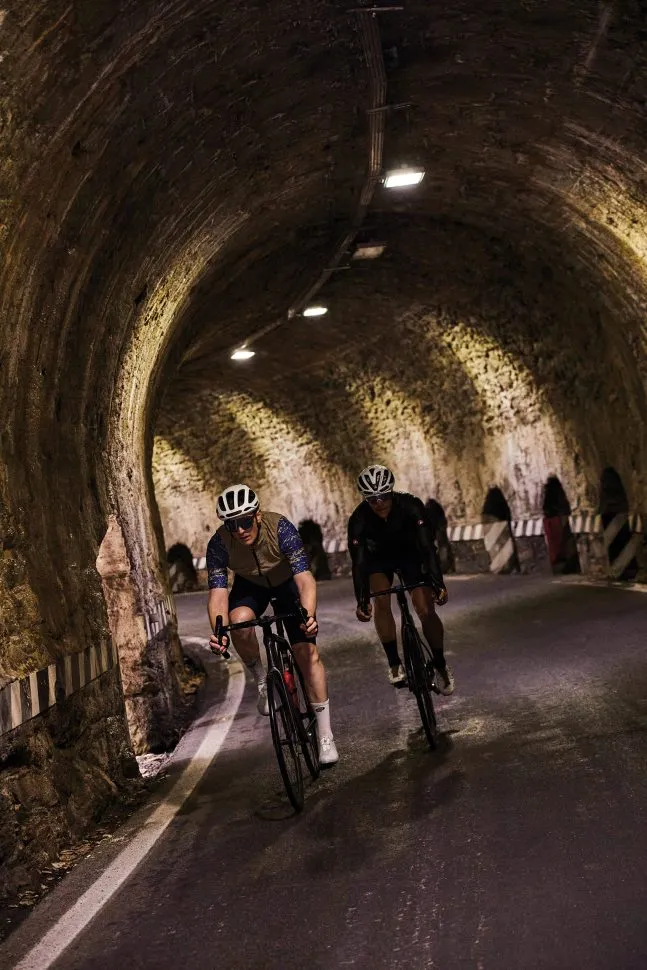
How we did it
Travel
Cyclist flew from Gatwick to Milan Bergamo. Direct flights are also available from Birmingham, Liverpool, Edinburgh and Manchester. In Milan we hired a car and drove the 150km to Bormio in around three hours.
Accommodation
We stayed at Hotel Funivia in Bormio, which is ideal for cyclists as it has a dedicated garage and workspace underneath the reception, boasting every tool you can shake a cassette at. Plus Daniele Schena – aka Stelvio Man, our guide for the trip – runs bike tours from here and the hotel will equip you with packed lunches and an inclusive laundry service. For the times when you’re not riding, the hotel is located by the river Adda and just a short walk from the medieval town centre and its charming main piazza. Double rooms start from €200 per night. See hotelfunivia.it for details.
Thanks
Many thanks to Daniele Schena, aka Stelvio Man, for planning the route, Danilo Compagnoni for arranging the hire bike from Bormio Ski & Bike (bormioskibike.com), and to the thoroughly reliable George Thoen, who provided transport for our photographer. Thanks to Francesca Carniglia and Veronica Mazzola, who were very proactive in arranging every element of the trip. We enjoyed some great food and welcoming service at both Osteria la Bajona (bajona.it) and The Steak House Bormio, as well as Hotel Funivia’s own restaurant.
The post Big Ride: The Passo dello Stelvio, legend of the Giro appeared first on Cyclist.
